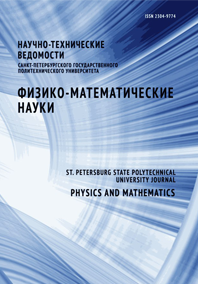Determining the size distribution function of irregularly shaped particles for human blood cells and finding their erythrocyte parameters (in vivo case)
This article continues the authors’ research aimed at constructing and developing a mathematical model used both to determine the size distribution function of human blood cells in vivo, and to find blood parameters used in medical practice. At this stage of the work, the nonsphericity of blood particles was taken into account and the convergence of processes describing multiple scattering of laser radiation by blood was optimized through the use of the method of extended boundary conditions, which made it possible to increase the possibilities of using the T-matrix method. The mathematical model for the analysis of biological processes has received material embodiment in a new software package. Regularization parameters are determined automatically based on specified kernel errors and “measured” data using different criteria. It is shown that, using the developed model, it is possible to theoretically predict the number of erythrocytes of abnormal size in a biomaterial based on measuring the width of the found erythrocyte size distribution.


